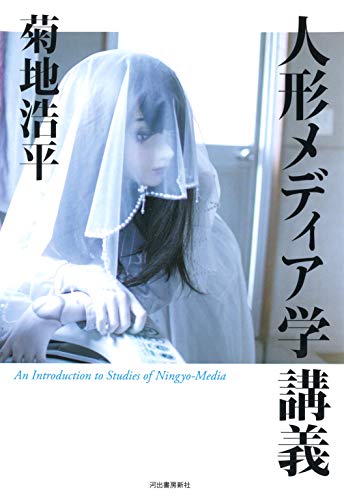5 0 0 0 日本人形表象文化と、着ぐるみ/ギニョールとしてのゴジラ
- 著者
- 菊地 浩平
- 出版者
- 早稲田表象・メディア論学会
- 雑誌
- 表象・メディア研究 (ISSN:2185923X)
- 巻号頁・発行日
- no.7, pp.31-52, 2017
- 著者
- 菊地 浩平 七田 麻美子 須永 将史
- 出版者
- 日本認知科学会
- 雑誌
- 認知科学 (ISSN:13417924)
- 巻号頁・発行日
- vol.29, no.2, pp.243-255, 2022-06-01 (Released:2022-06-15)
- 参考文献数
- 19
- 被引用文献数
- 1
This study aimed to clarify the changes in human life brought about by digital transformation (DX) through microscopic analysis. The data for this study were rehearsal data from a corporate training program. This program was originally conducted as a field trip to disaster-affected areas but was re-developed as an online trip due to the impact of the COVID-19 pandemic. We focused on the fact that the program provider repeatedly stated that “we want you to come to the field actually” to the program receivers in the opinion-exchange session. We could see these statements as certain procedures for providing accounts about the “lack of sufficiency” of online activity used by providers. In other words, regarding field as an idealized place, the providers dealt with the lack of sufficiency of online activity that the program receivers might feel. In this study, we call the field conceptualized by participants as “field as the home base”. Therefore, the concept emerges retrospectively against lack of sufficiency through interaction between participants. It is used in order to compensate for the lack of sufficiency of online activities. There are many benefits to the changes that DX has brought about in human life, but there are also negative reactions such as avoidance of DX and psychological barriers to it. The field as the home base can become a source of these negative reactions. If we are to further promote DX, it will be important to pay closer attention to the specifics of changes in human life.
2 0 0 0 OA サミュエル・フットの“不自然な”身体 -ふたつの演劇論からみた身体観とその表象-
- 著者
- 菊地 浩平
- 出版者
- 西洋比較演劇研究会
- 雑誌
- 西洋比較演劇研究 (ISSN:13472720)
- 巻号頁・発行日
- vol.12, no.2, pp.199-210, 2013-03-15 (Released:2013-03-15)
- 参考文献数
- 27
Samuel Foote (1720-1777) was a comedy playwright and actor whose plays were considered to be representative of eighteenth-century English theatre. However, these days, Foote is largely neglected by academia. My study of the Primitive Puppet-Shew reveals that the second marionette show Foote performed in his later years showed him performing with an unconventional casting that involved him and life-size wooden marionettes. Foote, who had a wooden prosthetic leg which he greatly depended upon, created a highly impressive production that raised questions regarding the boundaries between the human body and the marionette. A study of Foote’s first marionette show, Tragedy a-la-Mode, which he staged before the horse-riding accident in 1766 that cost him his leg, clarifies that Foote was aware of the significance of these questions even at that time. What exactly was the origin of Foote’s awareness of the significance of the body in experimental tragedy enacted using life-size pasteboard marionettes and a human actor? I attempt to answer this question through an exploration of Foote’s theatrical activities during his early to middle period, which can be regarded as the preparatory stage for his later marionette plays. Two of Foote’s theatrical essays are first analysed from his early period, “A Treatise on the Passions” and “The Roman and English Comedy Consider’d and Compar’d,” to clarify his attitude towards acting. In particular, I survey how Foote viewed Garrick’s “natural” style of acting, which the former examined in the two theatrical essays, and demonstrate that Foote intended to develop an acting technique that could compete with Garrick’s. I also elucidate Foote’s reaction to Garrick’s acting in his theatrical essays and how Foote’s concept of the body played an important role in his future theatrical activities as an actor and comedy playwright. Through an analysis of the character of Mrs. Cole in Foote’s masterpiece, The Minor, I clarify how he developed his concept of the actor’s body and subsequently applied it in his marionette plays.
1 0 0 0 人形メディア学講義
- 著者
- 菊地浩平著
- 出版者
- 河出書房新社 (発売)
- 巻号頁・発行日
- 2018
